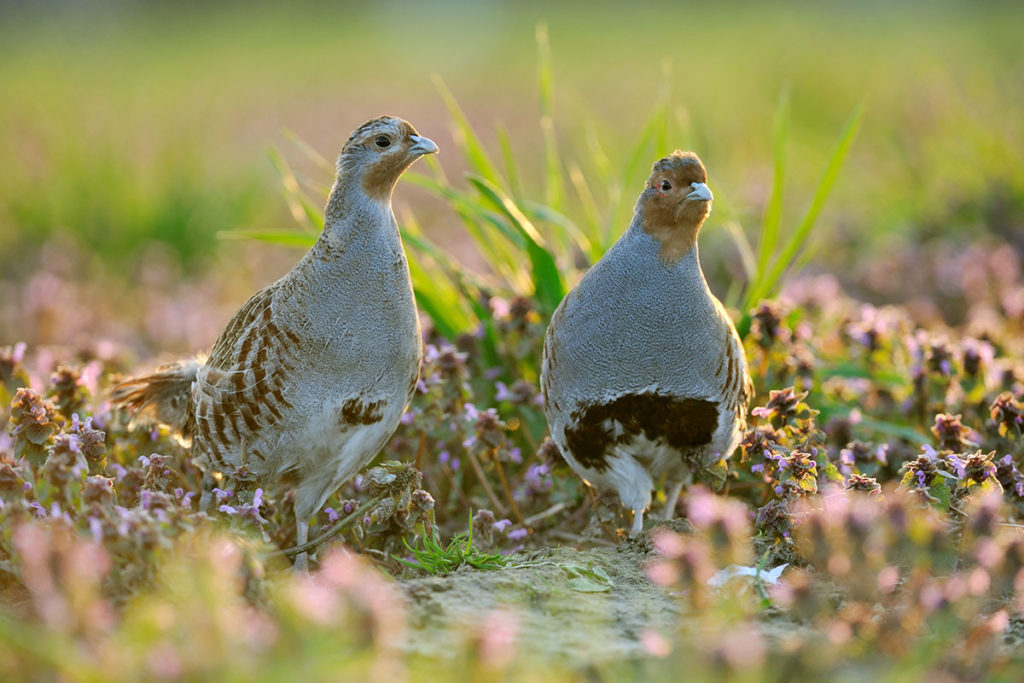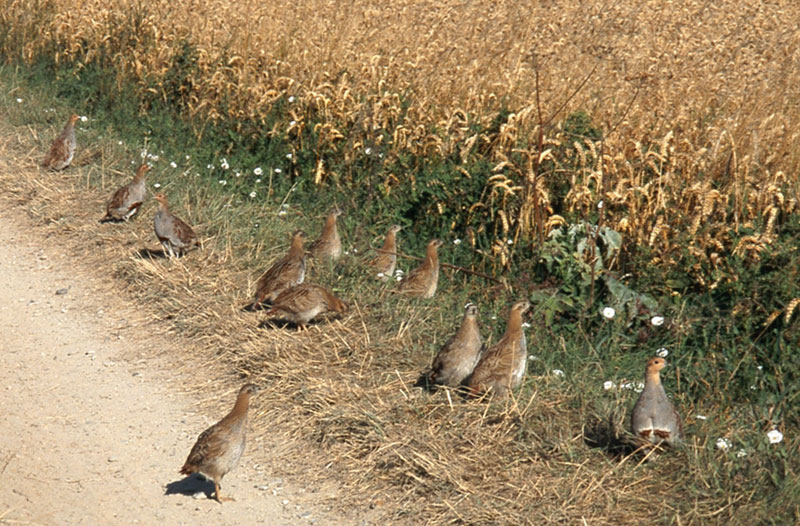Claim
There are only 100 grey partridges left in the UK.
What the science says
Incorrect.
The Avian Population Estimates Panel (APEP) estimates that there are 37,000 breeding pairs of grey partridges in the UK.
Comes from
This statement came from Short Cuts on Radio 4, broadcast on 24 March 2020. The presenters claimed that “today there are only about 100 grey partridges left in the UK”.
The Game & Wildlife Conservation Trust responded to this report, and the BBC replied, stating: “the producers were using figures from the Zoological Society of London and realise that they misread the ‘units’ column of the spreadsheet – reading ‘number of individuals’ instead of ‘index’, hence the much lower figures quoted in the feature.”
We have not been able to identify which publication from the Zoological Society of London (ZSL) the producers are referring to and these figures do not appear on the ZSL website.
What the Science says – the fuller picture

The UK’s Avian Population Estimates Panel (APEP) published their latest report in February 2020, listing population estimates of birds in Great Britain and the UK1. In this report, the authors estimate that there were 37,000 pairs of grey partridges in the UK in 2016.
This number is calculated by using the most reliable recent estimate of the size of the UK grey partridge population, combined with its population trend (see below), to project forwards and estimate what the population may now be. The grey partridge population size was taken from the 1988-2019 Breeding Birds Atlas2 and the trend up to 2016 was calculated by the British Trust for Ornithology (BTO) from their Common Birds Census and Breeding Bird Survey data3.
The results of the Breeding Bird Survey (BBS) are published annually in a report4 by the BTO, Joint Nature Conservation Committee (JNCC) and The Royal Society for the Protection of Birds (RSPB). This report summarises the results of count data, which is collected and reported by volunteers. The data are used to calculate population trends for 117 breeding birds, including grey partridges.
This analysis produces a trend estimate for each species that represents the annual change in their number, compared to the year when the survey began4. The trend estimate provides an index which changes over time and indicates whether numbers are rising, failing or remaining stable. This may be where the error was made on Short Cuts – with the producers of the programme misinterpreting the value of the index for actual numbers.
The trend in the size of UK bird populations, provided by the BBS and its predecessor, the Common Birds Census, is important for understanding how species numbers change over time, both in the short and long term.
Long-term trends offer the most useful information about conservation status. The most recent BBS results show that, across the UK, the number of grey partridge breeding pairs has declined by 64% in the 23 years from 1995 to 2018. In the last ten years, there was a decrease of 34% between 2008 and 2018, with a non-significant increase in the last year (2018 – 2019) of 4%4.
This long-term decline in grey partridge numbers has been linked to changes across UK farmland. The direct and indirect effects of pesticide use have led to a decline in insect numbers. Many of these insects are an important part of a grey partridge chick’s diet (as well as the chicks of other farmland birds), and declining insect numbers lead to poor chick survival. There has also been a loss of suitable nesting habitat and greater pressure from predators on those partridges that remains5.
Grey partridge conservation

The grey partridge is on the UK Red List of Birds of Conservation Concern6, and categorised as Vulnerable on the IUCN Regional Red List for the UK7. The Game & Wildlife Conservation Trust (GWCT) was nominated by the UK government as the Lead Partner for Grey Partridge recovery in 19965. Following this, the GWCT expanded its Partridge Count Scheme (PCS) and instigated local grey partridge groups. The GWCT also established the Royston and Rotherfield Demonstration Projects to offer practical examples of grey partridge conservation and show landowners and farmers that grey partridge restoration was possible.
The GWCT continues to work with farmers and landowners to conserve grey partridges on their land, using counts from the PCS to monitor numbers and productivity. The most difficult aspect to restoring grey partridge numbers is expanding the management undertaken by land managers, to support them across a wider landscape.
The grey partridge is also an indicator species for farmland biodiversity. This underpins a project in the North Sea Region Interreg programme called PARTRIDGE, led by the GWCT. The PARTRIDGE project (Protecting the Area’s Resources Through Researched Innovative Demonstration of Good Examples) will run to 2023. This project showcases conservation methods developed for the grey partridge, but which support a much wider range of farmland wildlife and aims to increase numbers by 30% on the demonstration sites.
In the UK, there are four demonstration sites, managed by GWCT staff with local partners. A further six are spread across partner countries. More detail on the grey partridge, its conservation, the methods that are effective and the benefits for other farmland wildlife has recently been published in a book by the PARTRIDGE project.
Donate and help us fight misinformation
References
- Woodward, I., Aebischer, N., Burnell, D., Eaton, M., Frost, T., Hall, C., Stroud, D. & Noble, D. (2020). Population estimates of birds in Great Britain and the United Kingdom. British Birds, 106:64–100.
- Gibbons, D., Reid, J. & Chapman, R. (1993). The new atlas of breeding birds in Britain and Ireland, 1988-1991. T. & A.D. Poyser. Lodnon.
- Woodward, I.D., Massimino, D., Hammond, M.J., Harris, S.., Leech, D.I., Noble, D.G., Walker, R.H., Barimore, C., Dadam, D., Eglington, S.M., Marchant, J.H., Sullivan, M.J.P., Baillie, S.R. & Robinson, R.A. (2018). BirdTrends 2018: trends in numbers, breeding success and survival for UK breeding birds. 708: Thetford.
- Harris, S.J., Massimino, D., Balmer, D.E., Eaton, M.A., Noble, D.G., Pearce-Higgins, J.W., Woodcock, P. & Gillings, S. (2020). The Breeding Bird Survey 2019. Thetford.
- Aebischer, N.J. & Ewald, J.A. (2010). Grey Partridge Perdix perdix in the UK: Recovery status, set-aside and shooting. Ibis, 152:530–542.
- Eaton, M., Aebischer, N., Brown, A., Hearn, R., Lock, L., Musgrove, A., Noble, D., Stroud, D. & Gregory, R. (2015). Birds of Conservation Concern 4: The population status of birds in the UK, Channel Islands and Isle of Man. British Birds, 108:708–746.7.
- Stanbury, A., Brown, A., Eaton, M., Aebischer, N., Gillings, S., Hearn, R., Noble, D., Stroud, D. & Gregory, R. (2017). The risk of extinction for birds in Great Britain. British Birds, 110:502–517.